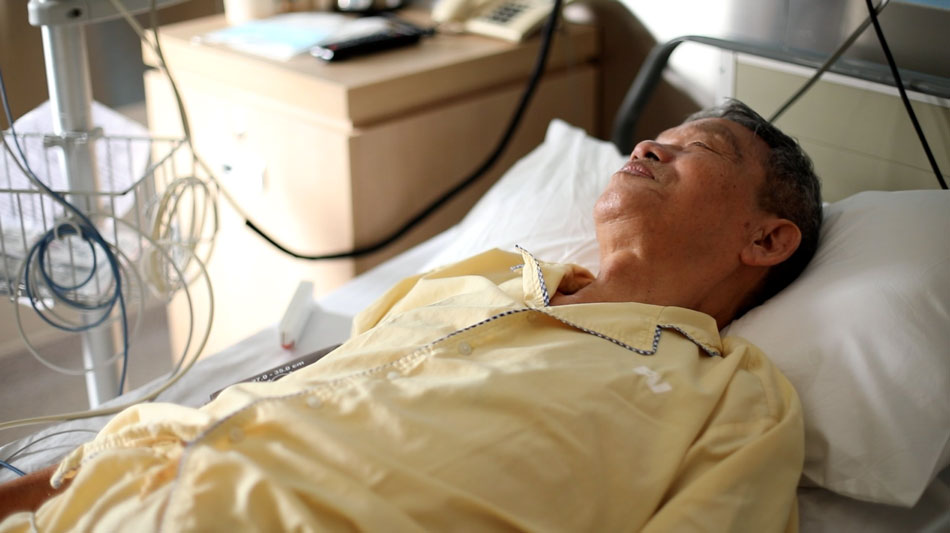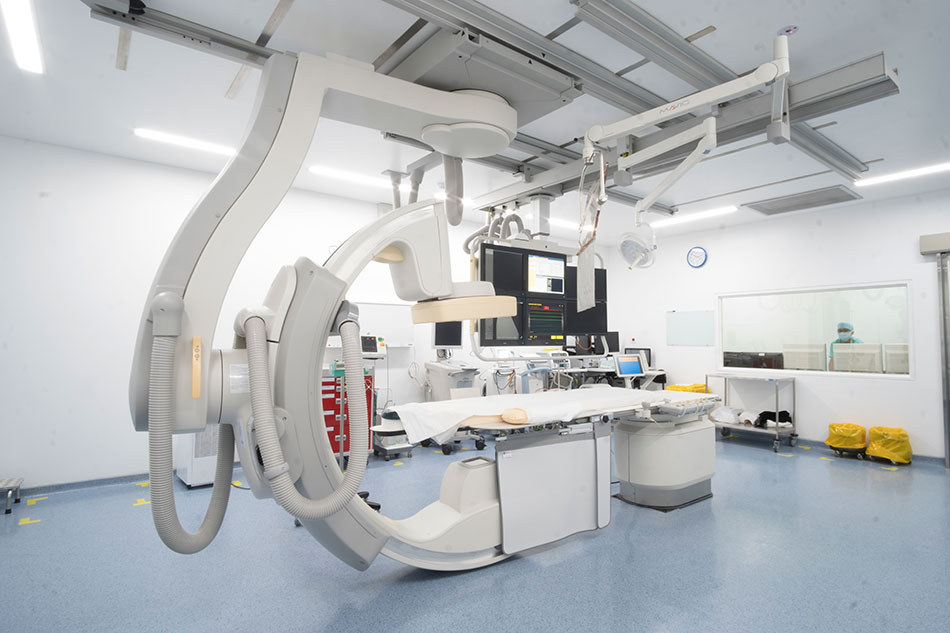FV Hospital’s medical team has just saved the life of an 82-year-old patient who suffered a cerebral stroke, even though he arrived after the “golden time”, the typical window for successful treatment, had passed. During examination, doctors also discovered that the patient had coronary complications and treated both diseases at the same time.
Multi-specialty consults and treatment regimens remove patients from danger
In September 2022, Mr V.V. Nhi (82 years old, residing in Dong Nai) collapsed and was taken to a Dong Nai hospital’s emergency room by his family. After a day in the hospital, his condition worsened, and his family was so worried that they decided to transfer him to FV Hospital.
FV Hospital received Mr Nhi in a state of semi-consciousness, having convulsions, and unable to speak. Doctors determined that Mr Nhi had suffered an acute stroke, but the golden time—six hours after the incident occurred—had passed for emergency stroke intervention.
Cardiology doctor Hoang Quang Minh, Mr Nhi’s primary physician, held interdisciplinary consultations with neuroendocrine doctors, including Mahen Nadarajah, MD, PhD, one of the world’s leading experts in the treatment of stroke and cerebrovascular diseases. Doctors concluded that Mr Nhi’s condition did not require cerebral vascular intervention, but neuro-medical treatment. After three days, Mr Nhi was out of danger, had no convulsions and was able to talk. However, the patient presented with chest tightness and pain.

Thanks to timely treatment, Mr Nhi survived the crisis
Analysing previous treatment for high blood pressure, diabetes and dyslipidemia, FV doctors learned that the patient had taken aspirin, an over-the-counter nonsteroidal anti-inflammatory drug and blood thinner that can treat pain, fever, headache and inflammation, in addition to preventing stroke, but a stroke had still occurred. Suspecting that the blood clot that caused the stroke could be from the heart, the doctors decided to examine Mr Nhi’s heart closely.
Dr Minh said that, in parallel with the medical stroke treatment regimen, Mr Nhi had been fitted with a 72-hour electrocardiogram to record arrhythmias—a common cause of blood clots going to the brain, causing strokes. However, the doctors did not notice an abnormality in his heart rhythm.
Mr Nhi was assigned an echocardiogram. The images showed that the patient’s myocardium was fine, there was no myocardial infarction, and there was no heart thrombus.
Mr Nhi then underwent a cardiac CT scan to evaluate the cardiac vasculature and see if there was a thrombus in the vascular system between the heart and brain. The results showed that he had coronary artery stenosis. Mr Nhi was assigned coronary intervention to treat his angina. After performing the procedure for Mr Nhi, Dr Ho Minh Tuan, Head of the Cardiology Department of FV Hospital, said: “The stent placement helps to reduce the risk of myocardial infarction, heart failure and limit the likelihood of another stroke.”
Dr Minh Tuan explains that this was a relatively difficult case, when the patient narrows in the left common trunk position and branching of the vessel. In addition, Mr. Nhi’s case is also special, when the rate of stroke patients with unstable chest pain like him only accounts for about 10% of stroke hospitalizations at FV.

FV Hospital’s fully equipped Cardiology Department is staffed by a team of excellent doctors who can treat cardiovascular patients comprehensively
Doctors must identify risk factors to prevent stroke
The leading cause of blood clots from the heart to the brain is atrial fibrillation, and the task of doctors is to understand and treat the cause of atrial fibrillation to prevent stroke recurrence.
Accordingly, Mr Nhi was recommended to have an Micra AV pacemaker implanted. This is the most advanced machine in this field and is being deployed at FV Hospital because it can monitor the patient’s electrocardiogram 24/7 for three years, helping to identify arrhythmia episodes, ergo warning patients of future stroke risks. Patients need to be periodically re-examined or visit a hospital when they have symptoms of chest pain or collapse so that a cardiologist can check the pacemaker data and determine the risk of arrhythmia. Since having the new pacemaker implanted, Mr Nhi has not experienced any arrhythmias.

Mr Nhi is filled with joy to learn his follow up examination is positive
Returning to FV for regular check-ups, Mr Nhi and his family say they are very happy to see him recover well. Mr Nhi shared gratefully: “For my age, the results of this treatment are nothing short of spectacular.”
FV Hospital is multi-specialty hospital comprised of modern, fully equipment departments, including a Cardiovascular Intervention room (Cathlab) where diagnostic surveys can be performed and cardiovascular and vascular diseases treated within minutes of a patient being admitted.
To reduce the burden of cost for patients, FV Hospital in cooperation with Ho Chi Minh City Social Insurance has expanded the scope of medical examination and high-tech treatment services covered by State Health Insurance at the hospital. Capabilities of FV’s Centre for Cardiovascular Intervention (Cathlab) include:
- Imaging and intervention to remove cerebral artery thrombus
- Angiography and treatment of cerebral aneurysms
- Brain aneurysm and node imaging
- Imaging of cerebral arteriovenous and dural malformation
- Digital subtraction angiography in the evaluation of carotid artery in the cavernous sinus
- Angiography, dilation and stenting of coronary arteries, mesenteric arteries, renal arteries
- Background digitised angiography (DSA)
- Electrophysiological exploration and treatment of arrhythmias with conventional high-frequency waves.
Patients can be covered by social insurance or up to 45 per cent of treatment costs at FV hospital. For detailed advice, please call (028) 54 11 33 33.



